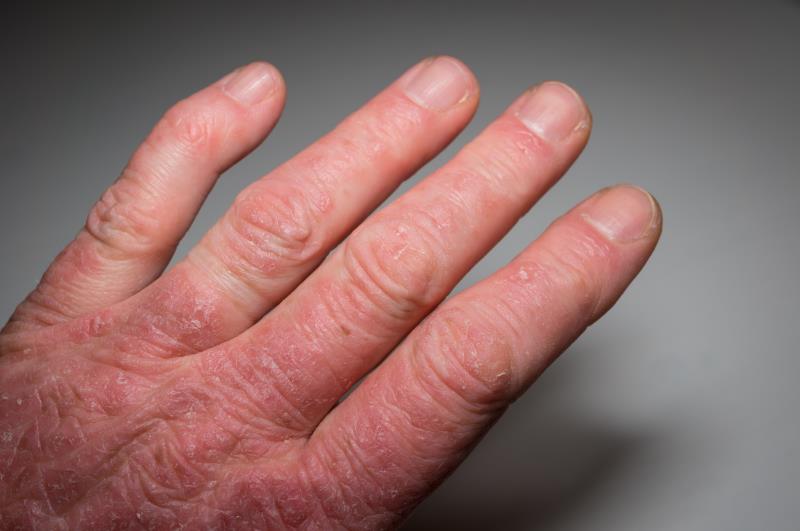
The high-affinity monoclonal antibody ixekizumab was superior to the tumour necrosis factor inhibitor adalimumab in the achievement of simultaneous improvements in joint and skin disease among bDMARD*-naïve patients with active psoriatic arthritis (PsA) and inadequate response to conventional synthetic(cs)DMARDs, according to the 24-week results of the SPIRIT-H2H study.
“Many patients with PsA and active skin and joint disease do not achieve satisfactory clinical response with csDMARDs in both important domains of the disease simultaneously,” said the researchers. Although bDMARDs offer additional treatment options, their comparative efficacy and safety remain unclear.
“SPIRIT-H2H is the first completed head-to-head trial comparing two bDMARDs in [this setting. Our findings show that] ixekizumab was associated with greater improvement of a combined articular and cutaneous endpoint in PsA … and had numerically lower incidences of [serious adverse events vs] adalimumab,” said the researchers.
This study comprised 566 individuals with an established diagnosis of PsA for at least 6 months and active plaque psoriasis affecting ≥3 percent of the body surface area. Participants were randomized 1:1 to receive either open-label ixekizumab** or adalimumab*** for 52 weeks. Patients on csDMARDs at screening may continue a stable dose of csDMARDs. [Ann Rheum Dis 2020;79:123-131]
At week 24, ixekizumab demonstrated superiority over adalimumab in the simultaneous achievement of ACR50# and PASI100## responses (36.0 percent vs 27.9 percent; p=0.036).
Regarding major secondary endpoints, ixekizumab was noninferior to adalimumab in terms of ACR50 response (50.5 percent vs 46.6 percent; p=0.338) but superior in terms of PASI100 response (60.1 percent vs 46.6 percent; p=0.001).
Although treatment-emergent adverse events, including infection-related and injection-site reactions, were more common with ixekizumab, most were mild to moderate in severity. Adalimumab use generated more serious infections. The safety and tolerability of both agents were consistent with their established safety profiles, noted the researchers.
The ultimate goal
Skin involvement in PsA is typically mild; however, clinicians often evaluate the impact of treatment on all affected domains, particularly the joints and skin. [Clin Rheumatol 2012;31:139-143; Arthritis Care Res 2015;67:708-717] Therefore, the goal is to provide simultaneous improvement in joint and skin manifestations, as these are necessary to achieve optimal improvement in health-related quality of life which, according to the researchers, is the ultimate treatment goal in PsA. [Ann Rheum Dis 2019;78:1215–1219]
“[A] combination of two validated and well-established outcome measures – a relatively stringent endpoint for articular disease (ACR50) and a very stringent endpoint for skin disease (PASI100) – was employed as the primary endpoint … [Our findings show that this] and the major secondary endpoints were met,” said the researchers.
“A key strength of the study is its relevance to real-world clinical setting. The open-label design and lack of placebo arm were modelled after the real-world setting where patients receive active treatments and are aware of [the] treatment they receive,” said the researchers, adding that these factors may have contributed to the increased responses. Moreover, the responses for both agents were higher than those found in previous studies. [Arthritis Rheum 2005;52:3279-289; Ann Rheum Dis 2017;76:79-87; Lancet 2017;389:2317-2327]
However, despite the similarity of the population to other trials, it may not be representative of patients in clinical practice, the researchers pointed out. The lack of imaging or structural joint damage evaluation might have also limited the findings. Moreover, the long-term clinical responses have yet to be determined.
“[Nonetheless,] the findings … increase awareness of current treatment options and inform evidence-based treatment decisions for patients with active PsA and active psoriatic skin disease,” said the researchers.